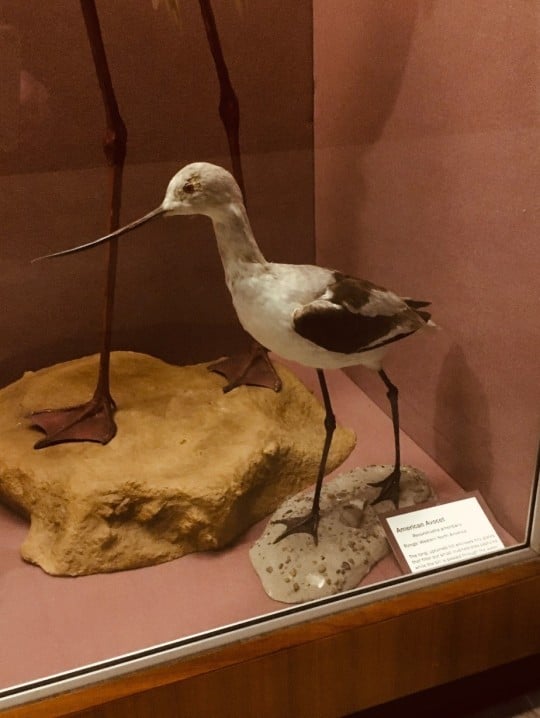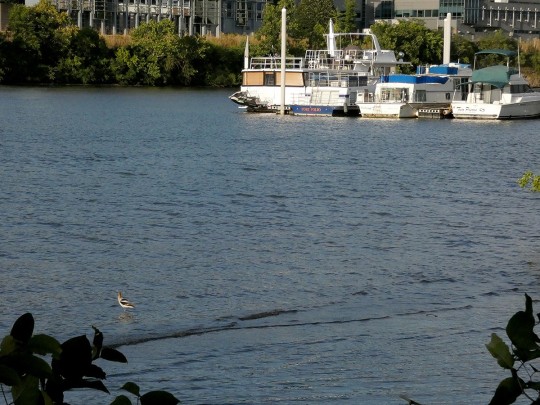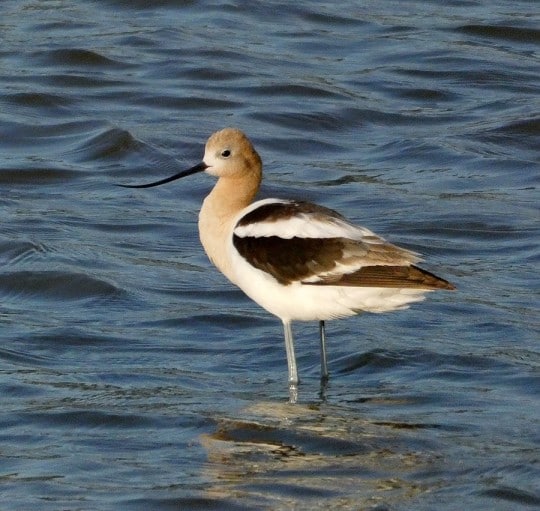
If you enter Bird Hall from the Grand Staircase Balcony, the first taxidermy mount you’ll encounter is an American Avocet, an elegant species commonly associated with the shallow margins of western lakes. The life-like preserved remains of the 20-inch high, long-legged, and long-billed bird occupy the lower-right position within a display case visually dominated by a flamingo. “Adaptations for Feeding” is the comparative theme for the display’s six preserved birds, a select group the Avocet earned membership among by virtue of its long, reed-thin, and slightly up-turned bill.
The species, known to science as Recurvirostra Americana, feeds by swinging its bill scythe-like through the water to capture small invertebrates. Remarkably, on a recent evening, I was able to observe an Avocet demonstrate the technique in waters less than three miles from the museum.

On July 24, a local birder used an online forum to share a lunchtime sighting of an avocet in the shallow waters of Monongahela River near the Birmingham Bridge. The report enabled other birders to make quick plans for riverside visits, and by 7:00 p.m. I was among a handful of binocular-bearing observers who watched the bird for 30 minutes from a South Side path before it flew upstream and out of sight.

In the following days I tried to retroactively enrich the firsthand observation. I read the American Avocet account on the Cornell Lab of Ornithology’s informative All About Birds website, re-read relevant passages in The Wind Birds, author Peter Matthiessen’s 1967 tribute to the diverse tribe of species collectively termed “shore birds,” and finally, made a narrowly-focused visit to Bird Hall.
Kneeling on the marble floor in front of the avocet, I was able to inspect a key physical feature that days earlier had been concealed by murky Monongahela waters – the species’ fully webbed feet. Studying anatomical details on taxidermy mounts can enhance field observations of wildlife. This statement can be something of a mantra for natural history museum educators.
Patrick McShea works in the Education and Visitor Experience department of Carnegie Museum of Natural History. Museum employees are encouraged to blog about their unique experiences and knowledge gained from working at the museum.
